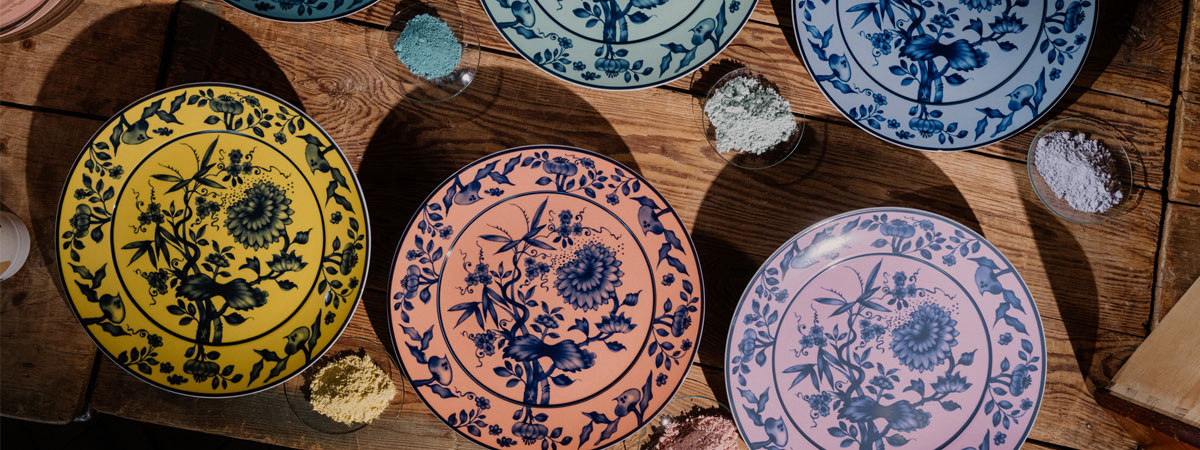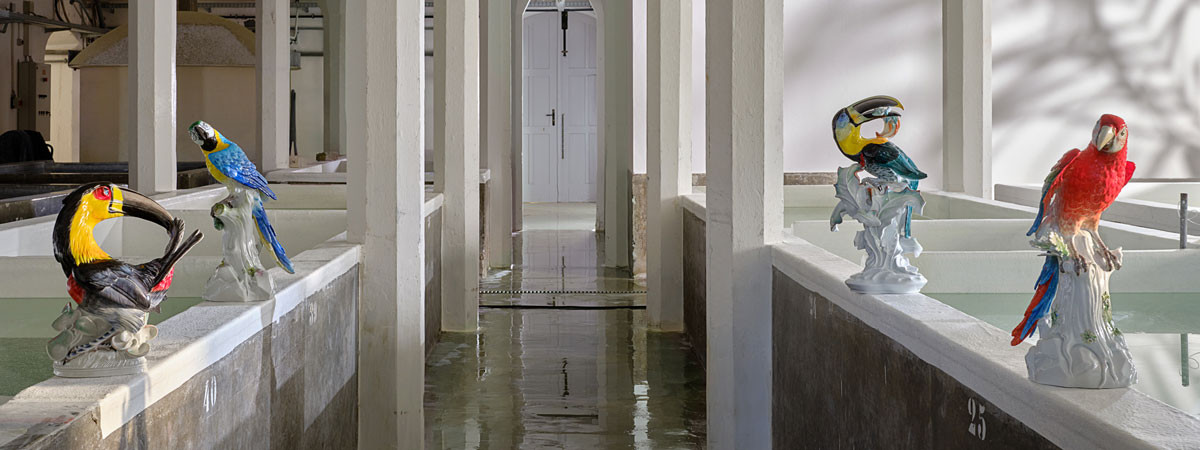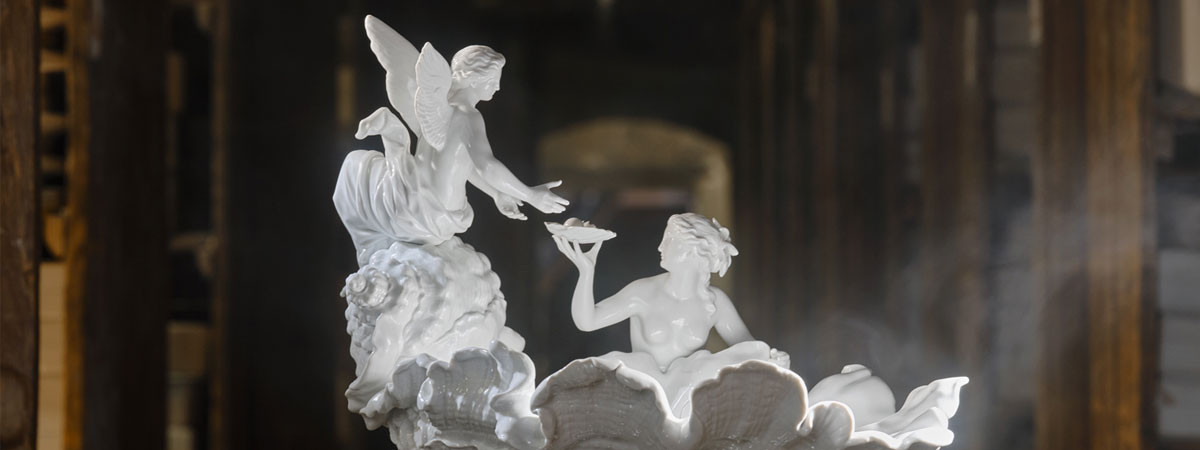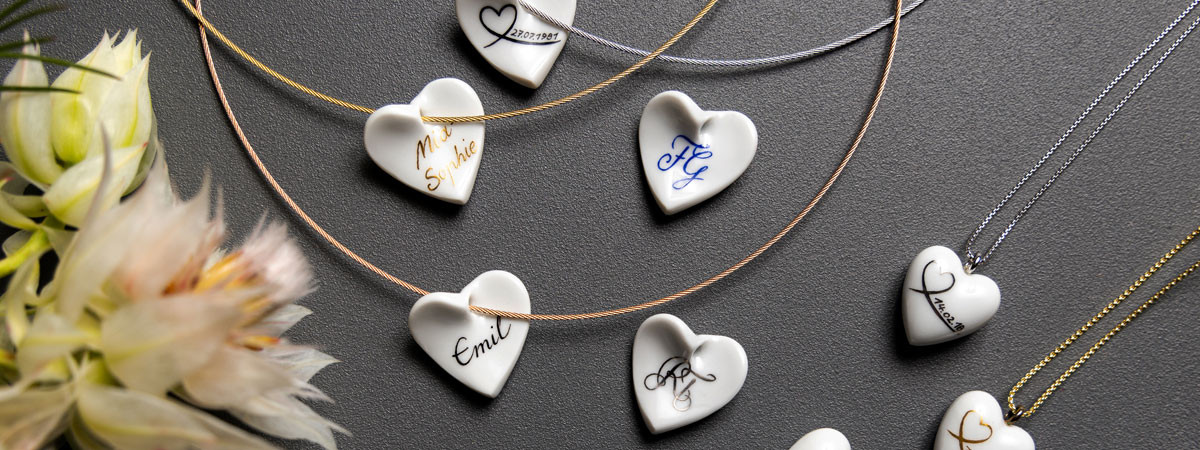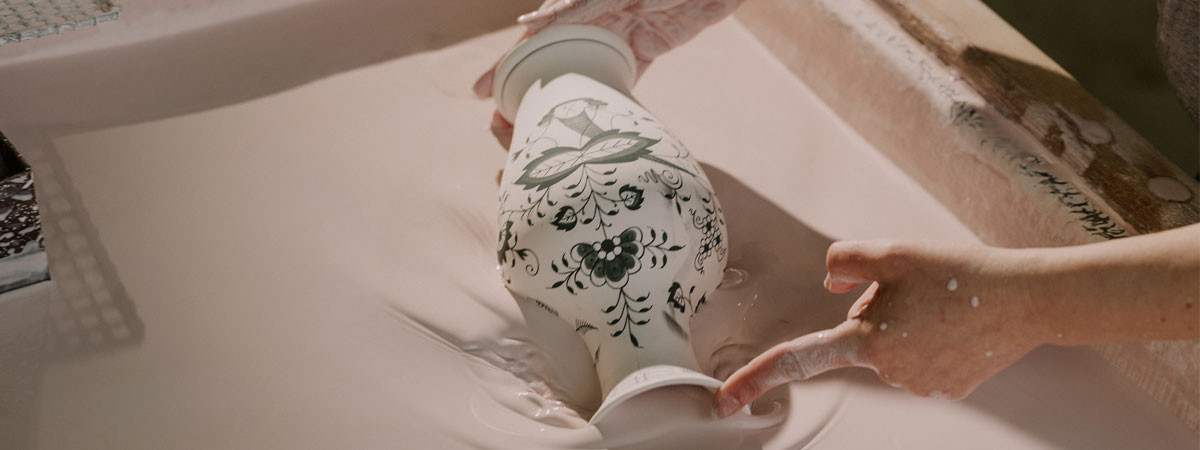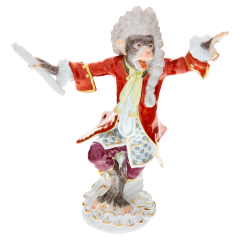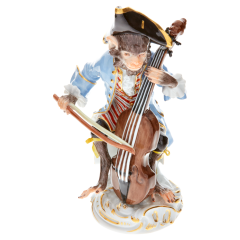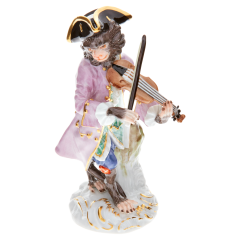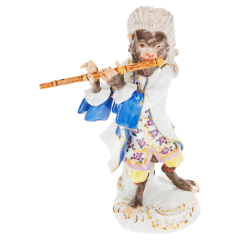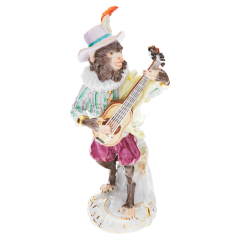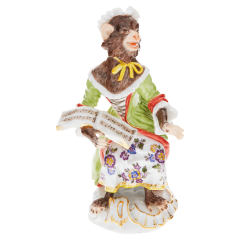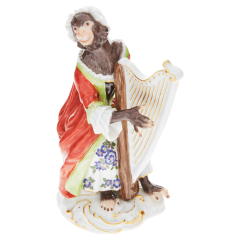Monkey Orchestra
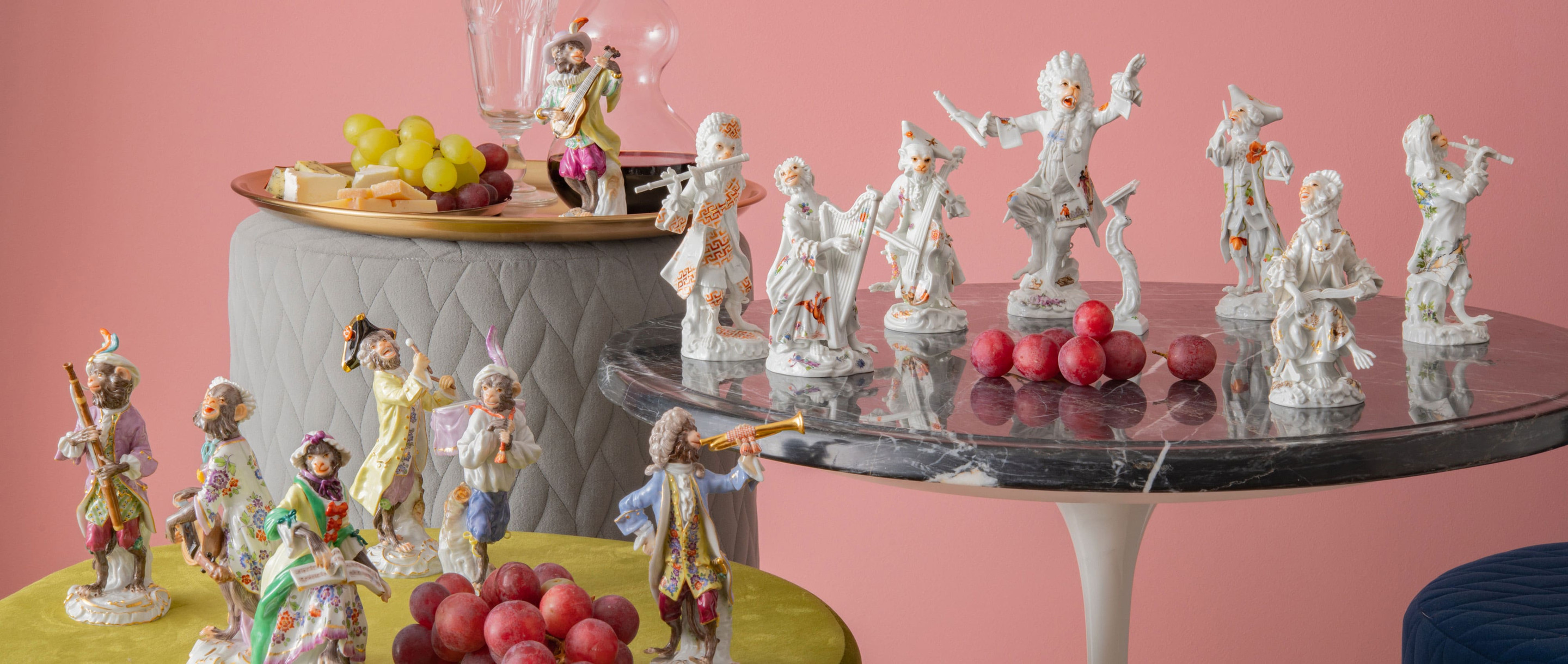
Over centuries, the Meissen manufactory has produced a wide variety of collectible figurines and themed porcelain series in the many historic styles since its founding. This rich tradition has its beginnings in the 18th century, fostered by the creativity of Meissen artists and a long tradition of sophisticated table décor. At that time, figurines made from sugar, marzipan or gum tragacanth were a must on the painstakingly decorated dining tables of aristocratic homes, lending a backdrop of subtle satire, hidden humour and secret messages to every feast.
With the invention of hard-paste porcelain in the mid-18th century, Meissen craftsmen usurped the confectioners, creating elaborate table decorations with a much longer life span than their predecessors. Porcelain figurines soon found a place in the vitrines of every prosperous home. This rise in demand sparked an unprecedented wealth within Meissen’s thematic repertoire, which besides religious and mythological motives as well as scenes from the Saxon court, by the mid-18th century, came to include depictions of folklore and everyday life. The porcelain cabinets and collections soon started to grow and become increasingly curated to express the elevated taste and level of culture of this newly formed league of porcelain collectors. The passion for collecting Meissen porcelain figurines was born that carries on today.
-
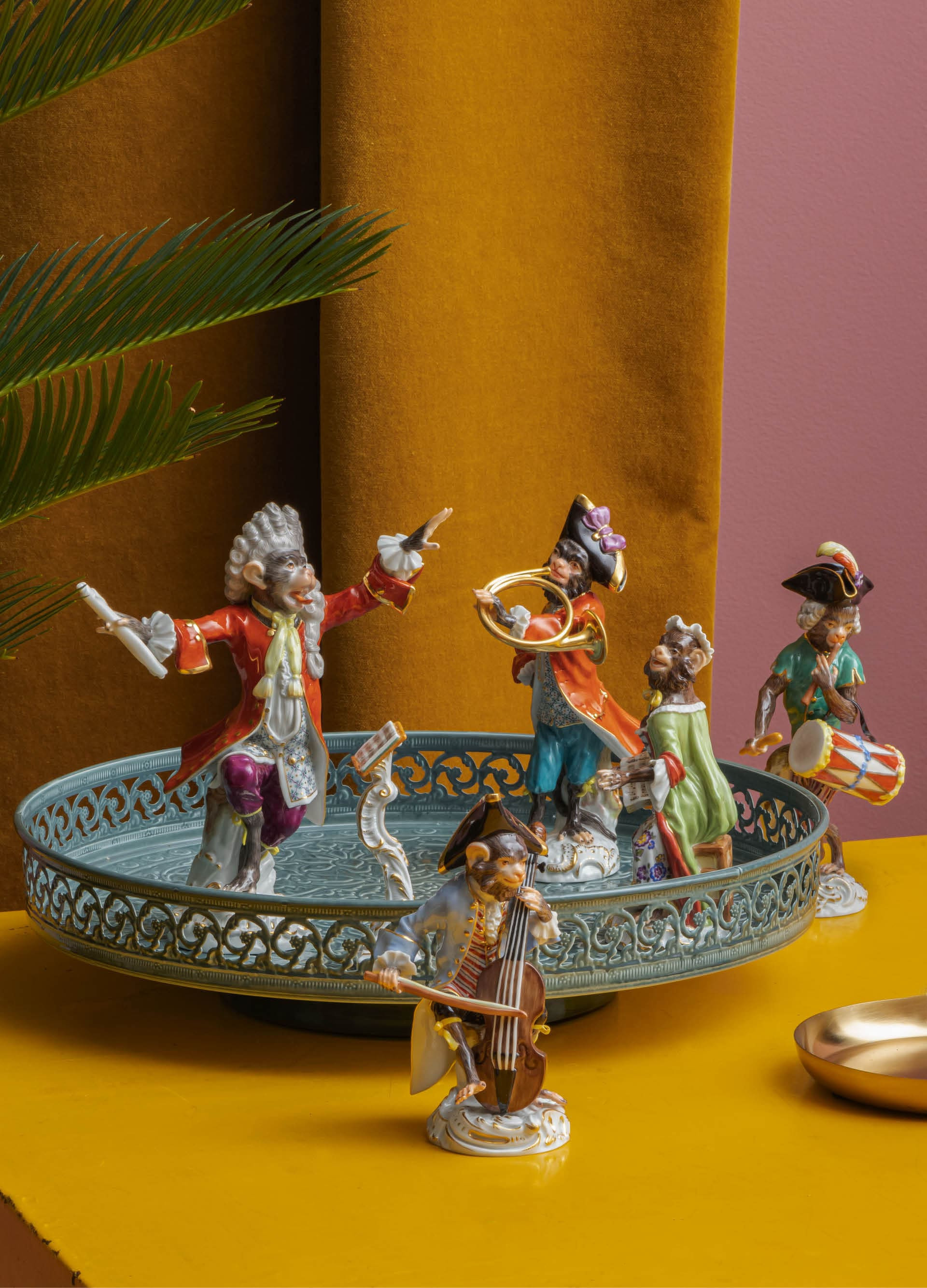 Monkey OrchestraDesigned by master modeler Johann Joachim Kaendler in the middle of the 18th century, the “Monkey Orchestra” is an outstanding example from Meissen’s Baroque era. Popular in France at that time, the singerie genre depicts fashionably dressed monkeys imitating human behaviour in a satirical manner. Entire rooms could be decorated with these comical scenes, from the walls, upholstery fabrics and carpets all the way to the porcelain. Modelled after drawings from famed French singerie artist Christophe Huet, the “Monkey Orchestra” is an ensemble of Rococo-outfitted primates, produced with elaborate craftsmanship and painted in rich detail. The earliest of these figurines quickly made their way from the Meissen kilns straight to Paris, where Madame de Pompadour, mistress to King Louis XV, was one of the first recipients of the collection in 1753.
Monkey OrchestraDesigned by master modeler Johann Joachim Kaendler in the middle of the 18th century, the “Monkey Orchestra” is an outstanding example from Meissen’s Baroque era. Popular in France at that time, the singerie genre depicts fashionably dressed monkeys imitating human behaviour in a satirical manner. Entire rooms could be decorated with these comical scenes, from the walls, upholstery fabrics and carpets all the way to the porcelain. Modelled after drawings from famed French singerie artist Christophe Huet, the “Monkey Orchestra” is an ensemble of Rococo-outfitted primates, produced with elaborate craftsmanship and painted in rich detail. The earliest of these figurines quickly made their way from the Meissen kilns straight to Paris, where Madame de Pompadour, mistress to King Louis XV, was one of the first recipients of the collection in 1753.
“Kaendler’s ‘Monkey Orchestra’ is an exquisite example of Meissen’s Baroque era, sparking a passion for collecting Meissen porcelain figurines that carries on today.”
-
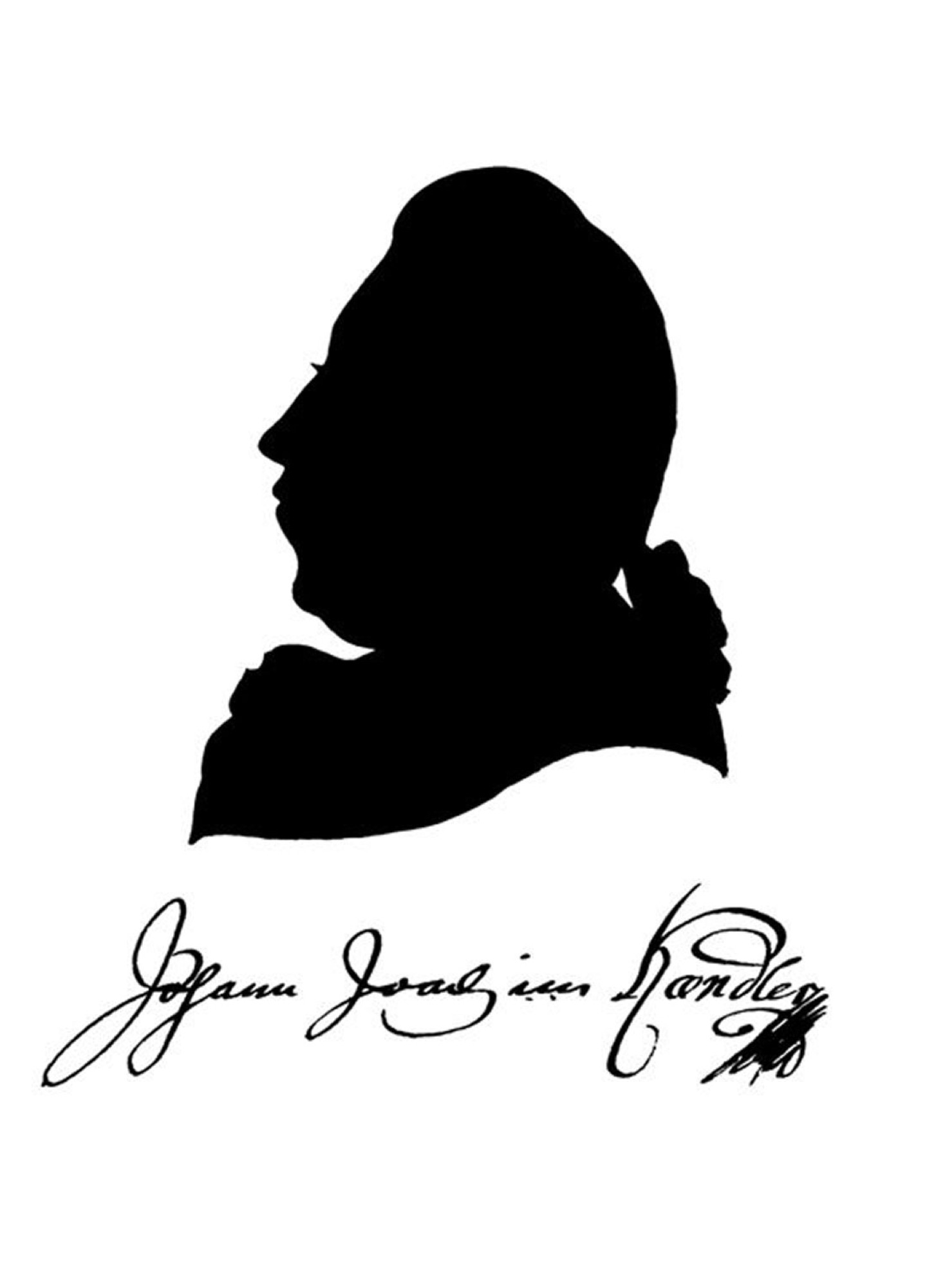 Johann Joachim KaendlerJohann Joachim Kaendler remains one of the most significant modelers in the history of the Meissen manufactory. It was his works that established the wide renown of Europe’s first producer of porcelain. Born in 1706 in Fischbach bei Dresden, Kaendler arrived in Meissen in 1731 as a young sculptor serving the Saxon royal courts and quickly made a name for himself modelling life-sized animal sculptures for the Japanese Palace. He devoted himself to fulfilling every demand of his royal employer, creating numerous epochal pieces in rapid succession that redefined the limits of porcelain as an artistic medium. Of equal significance were the containers, tableware and service sets that were created under his direction, most notably the 2200-piece “Swan Service” of 1742, the largest and most lavishly decorated service in the history of the Meissen manufactory.
Johann Joachim KaendlerJohann Joachim Kaendler remains one of the most significant modelers in the history of the Meissen manufactory. It was his works that established the wide renown of Europe’s first producer of porcelain. Born in 1706 in Fischbach bei Dresden, Kaendler arrived in Meissen in 1731 as a young sculptor serving the Saxon royal courts and quickly made a name for himself modelling life-sized animal sculptures for the Japanese Palace. He devoted himself to fulfilling every demand of his royal employer, creating numerous epochal pieces in rapid succession that redefined the limits of porcelain as an artistic medium. Of equal significance were the containers, tableware and service sets that were created under his direction, most notably the 2200-piece “Swan Service” of 1742, the largest and most lavishly decorated service in the history of the Meissen manufactory. -
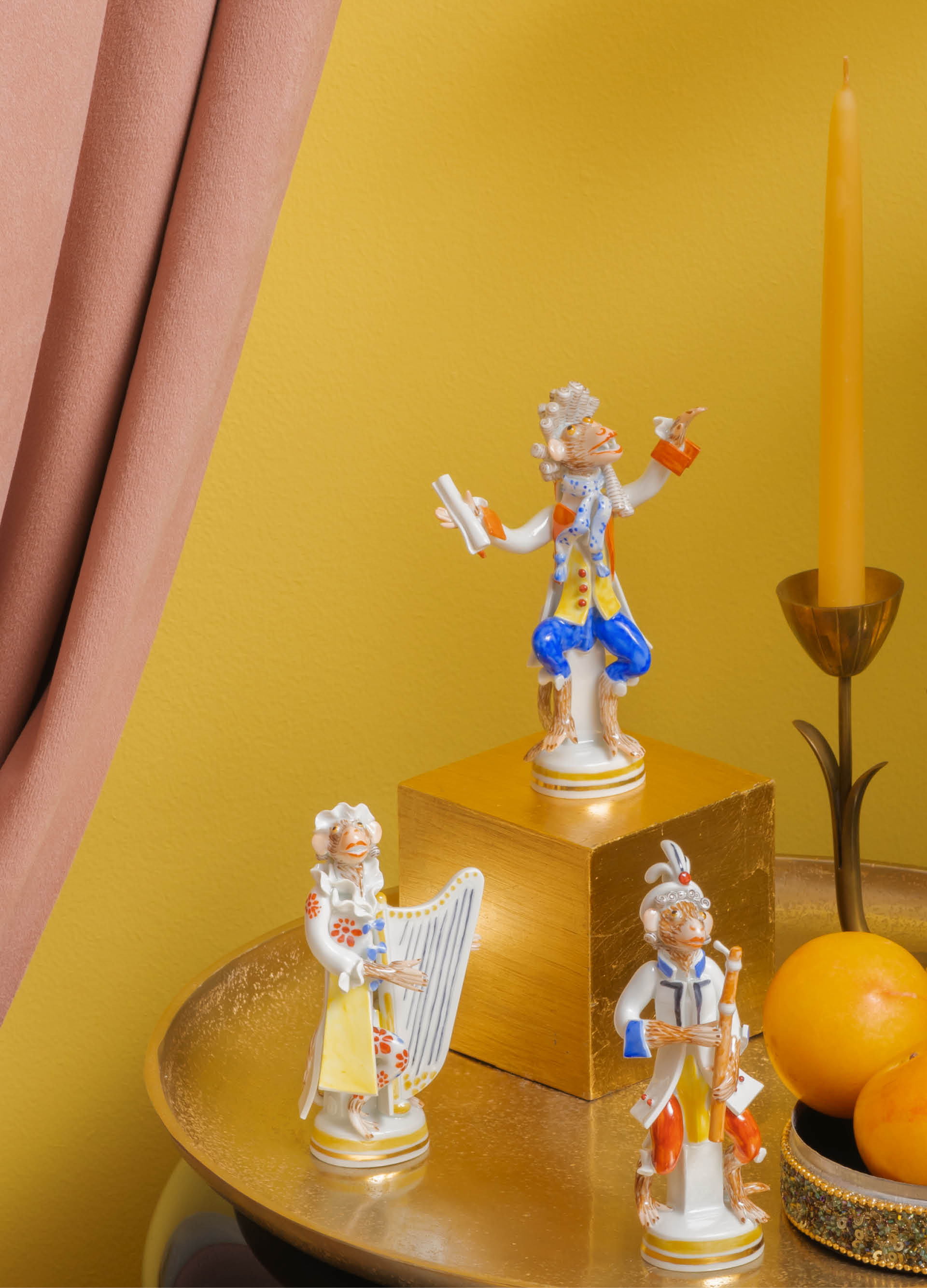 Monkey MusiciansWith his “Monkey Musicians”, Peter Strang revisits a classic Baroque masterpiece, reinterpreting the historic original with his inimitably expressive style. Strang reduced the figurines down to the essentials in order to concentrate on their expressions, focusing on the details of the heads and hands in particular. Simple primary colours such as red, yellow and blue were chosen for the painted accents. Following the example of the Kaendler originals, Strang’s “Monkey Musicians” lack for nothing in their virtuosity and artistic perfection. To create the jovial ensemble, the sculptor and modeler developed an entirely new style, forgoing moulds to build each figurine by hand.
Monkey MusiciansWith his “Monkey Musicians”, Peter Strang revisits a classic Baroque masterpiece, reinterpreting the historic original with his inimitably expressive style. Strang reduced the figurines down to the essentials in order to concentrate on their expressions, focusing on the details of the heads and hands in particular. Simple primary colours such as red, yellow and blue were chosen for the painted accents. Following the example of the Kaendler originals, Strang’s “Monkey Musicians” lack for nothing in their virtuosity and artistic perfection. To create the jovial ensemble, the sculptor and modeler developed an entirely new style, forgoing moulds to build each figurine by hand.
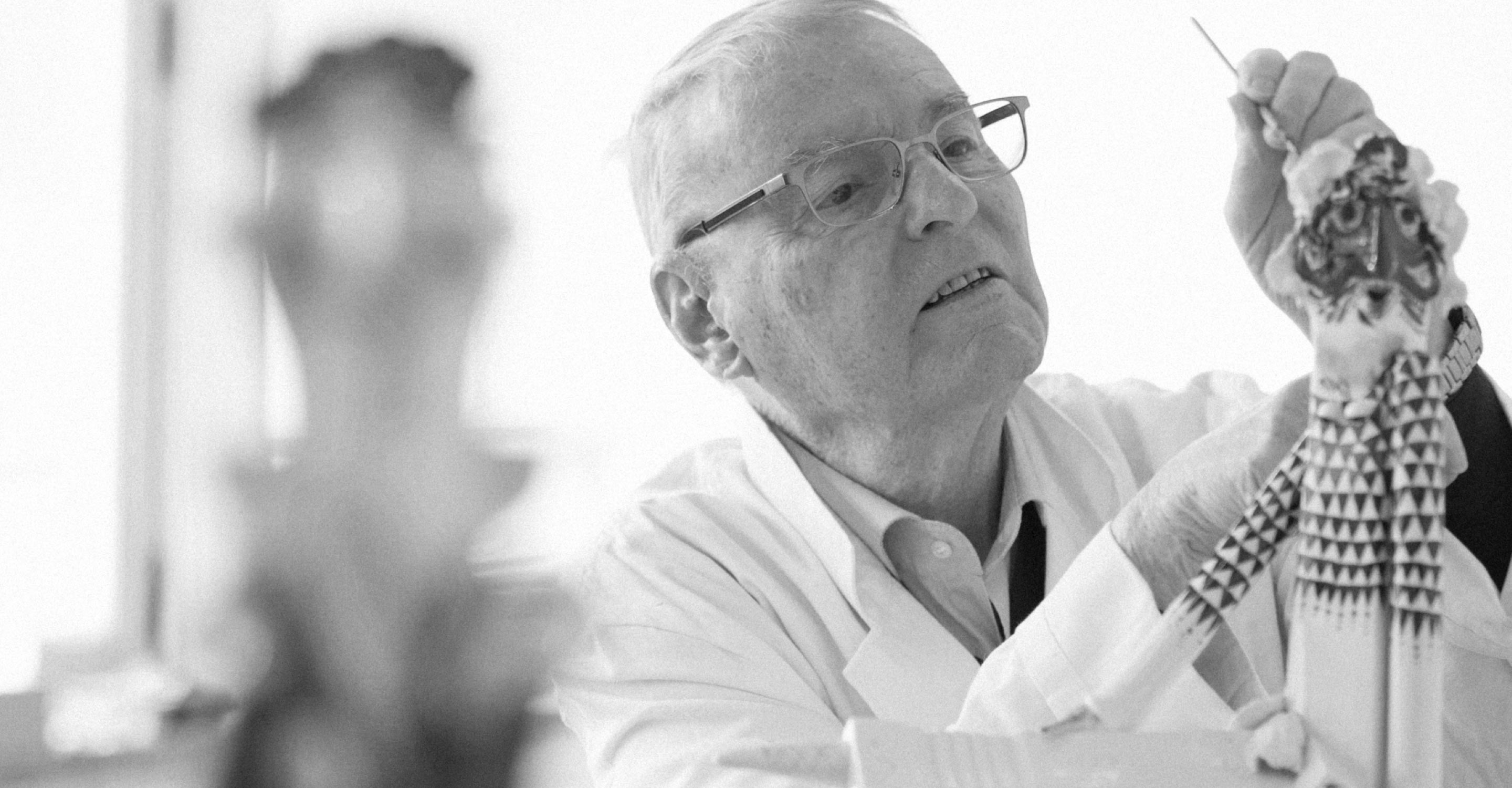
Peter Strang
No matter whether Peter Strang is delving into grand themes from theatre and mythology or the folkloric appeal of fairy tales, it is the irony, humour and complexity of his style that make his creations so distinctive. True to his maxim to push the limits of what is possible, Peter Strang fully embraces all the aesthetic potential of the porcelain medium. First as a modeler and eventually as head sculptor, he has continually raised the bar at MEISSEN with his technical and artistic mastery for capturing the spectrum of human sentiment. For his more than 50 years of work for Europe’s oldest porcelain manufactory, Strang was awarded the Order of Merit of Saxony in 2000 and a Federal Order of Merit in 2007.
Campaigns
-
01
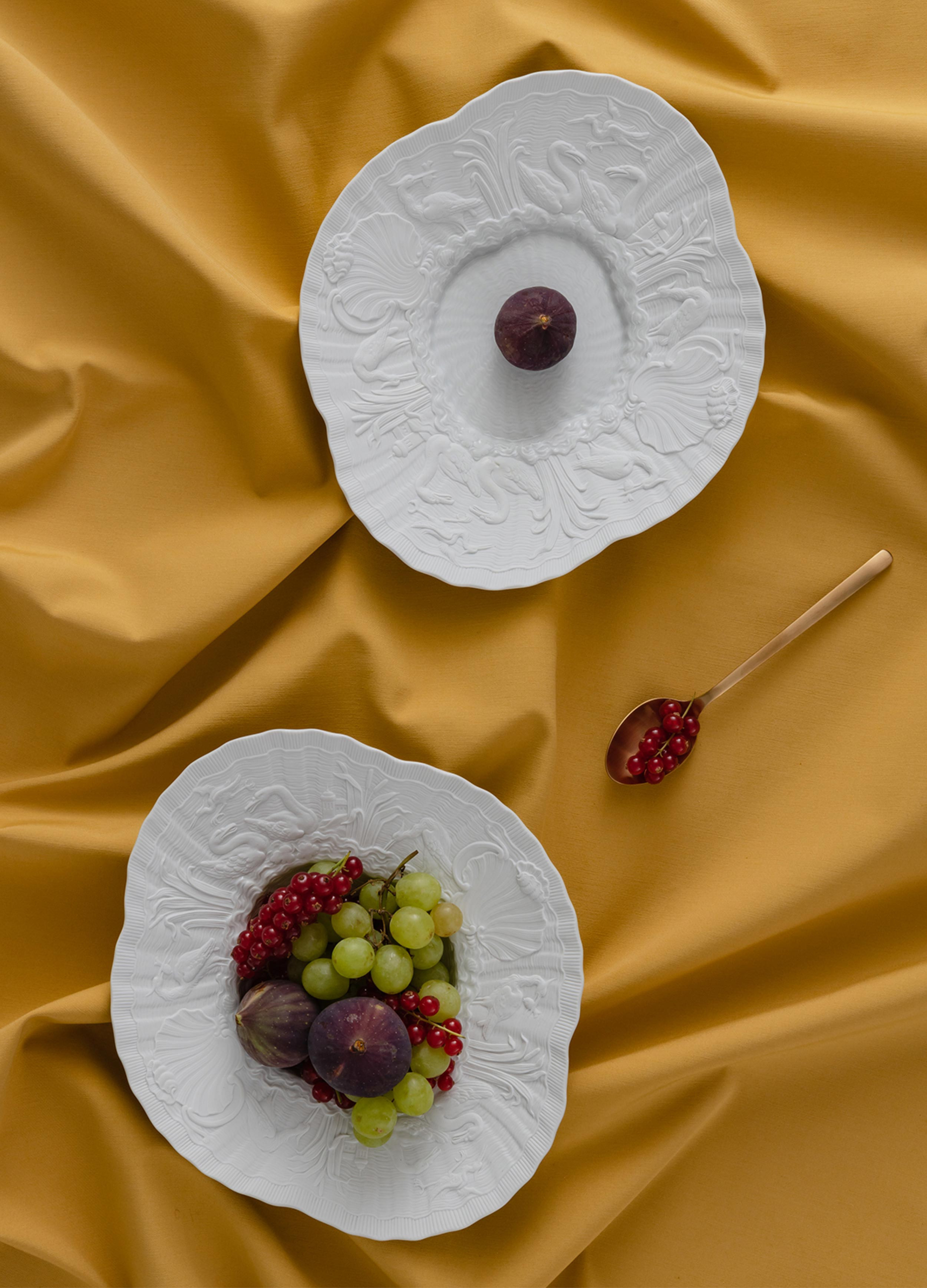 Swan ServiceThe 1738 "Swan Service" is a masterpiece of Baroque-era Meissen porcelain, serving a plethora of elaborately worked reliefs.
Swan ServiceThe 1738 "Swan Service" is a masterpiece of Baroque-era Meissen porcelain, serving a plethora of elaborately worked reliefs. -
02
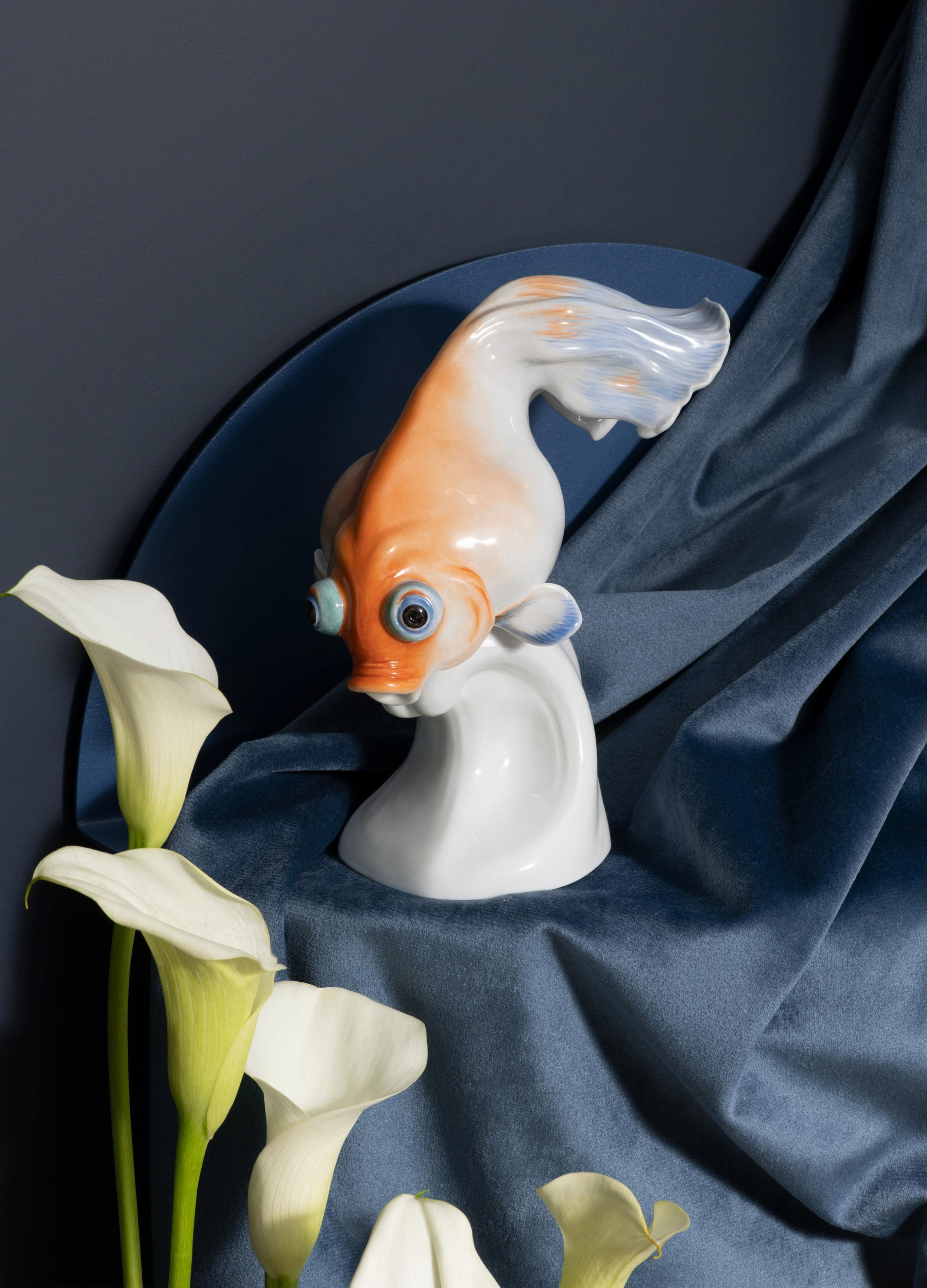 Limited EditionMEISSEN draws on its collection of historic models and paints for this "Limited Edition" series, presenting reissues of classic pieces and new historically inspired works.
Limited EditionMEISSEN draws on its collection of historic models and paints for this "Limited Edition" series, presenting reissues of classic pieces and new historically inspired works.

